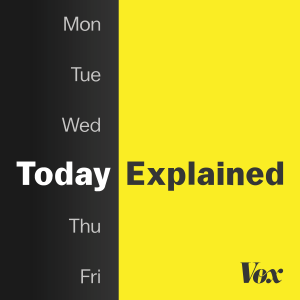

Hurricane Tracker - United States
Tropical System Brewing in Atlantic as Hurricane Season Ramps Up
2025-04-09
Over the past 24 hours, the National Hurricane Center (NHC), NOAA, and major meteorological outlets have issued new updates on tropical activity in the Atlantic as forecasters continue monitoring the early stages of what is anticipated to be a busy hurricane season. According to the NHC, as of the latest advisories, a low-pressure system in the central tropical Atlantic is drawing attention. Though still disorganized, the disturbance has shown signs of gradual development and could become a...
Over the past 24 hours, the National Hurricane Center (NHC), NOAA, and major meteorological outlets have issued new updates on tropical activity in the Atlantic as forecasters continue monitoring the early stages of what is anticipated to be a busy hurricane season. According to the NHC, as of the latest advisories, a low-pressure system in the central tropical Atlantic is drawing attention. Though still disorganized, the disturbance has shown signs of gradual development and could become a tropical depression by the weekend. The system is moving west-northwest at approximately 10 to 15 mph and is expected to approach the Lesser Antilles by early next week, potentially bringing heavy rainfall and gusty winds to the eastern Caribbean islands. NOAA's outlook maintains a low to medium level of confidence in near-term development but stresses the importance of early awareness as ocean temperatures remain well above average for this time of year, enhancing storm formation potential.
Meanwhile, over the Gulf of Mexico, atmospheric conditions remain relatively stable, offering little support for new cyclonic activity. Nevertheless, forecasters are keeping a watchful eye on a stalled frontal boundary stretching from the southeastern U.S. into the Gulf, which could spark localized heavy rains and thunderstorms in coastal areas of Louisiana and Texas through the weekend. As of today, no tropical storm warnings or hurricane watches are in effect along U.S. coastlines, though marine advisories are in place in parts of the Atlantic and eastern Gulf due to rough waters and elevated risk of rip currents.
Along the Eastern Seaboard, remnants of a mid-level disturbance off the Carolina coast have drifted northeastward and are now merging with a frontal system in the North Atlantic. The Weather Channel reports that while the system is not expected to become tropical, it has been producing strong surf and limited coastal flooding in parts of the Outer Banks and southern New England. Farther south, Saharan dust continues to sweep westward across the tropical Atlantic, suppressing convection and capping storm formation in several key regions. However, the dry air is expected to thin early next week, which may allow for more favorable conditions.
Looking ahead, NOAA expects the Madden-Julian Oscillation to enhance upward motion across the Caribbean and western Atlantic in the next 7 to 10 days. As hurricane season progresses, forecasters urge residents in hurricane-prone areas to stay informed and review preparedness plans, especially as Atlantic activity shows early signs of intensification.
View more
Meanwhile, over the Gulf of Mexico, atmospheric conditions remain relatively stable, offering little support for new cyclonic activity. Nevertheless, forecasters are keeping a watchful eye on a stalled frontal boundary stretching from the southeastern U.S. into the Gulf, which could spark localized heavy rains and thunderstorms in coastal areas of Louisiana and Texas through the weekend. As of today, no tropical storm warnings or hurricane watches are in effect along U.S. coastlines, though marine advisories are in place in parts of the Atlantic and eastern Gulf due to rough waters and elevated risk of rip currents.
Along the Eastern Seaboard, remnants of a mid-level disturbance off the Carolina coast have drifted northeastward and are now merging with a frontal system in the North Atlantic. The Weather Channel reports that while the system is not expected to become tropical, it has been producing strong surf and limited coastal flooding in parts of the Outer Banks and southern New England. Farther south, Saharan dust continues to sweep westward across the tropical Atlantic, suppressing convection and capping storm formation in several key regions. However, the dry air is expected to thin early next week, which may allow for more favorable conditions.
Looking ahead, NOAA expects the Madden-Julian Oscillation to enhance upward motion across the Caribbean and western Atlantic in the next 7 to 10 days. As hurricane season progresses, forecasters urge residents in hurricane-prone areas to stay informed and review preparedness plans, especially as Atlantic activity shows early signs of intensification.
Comments (3)
More Episodes
All Episodes>>Create Your Podcast In Minutes
- Full-featured podcast site
- Unlimited storage and bandwidth
- Comprehensive podcast stats
- Distribute to Apple Podcasts, Spotify, and more
- Make money with your podcast
It is Free












